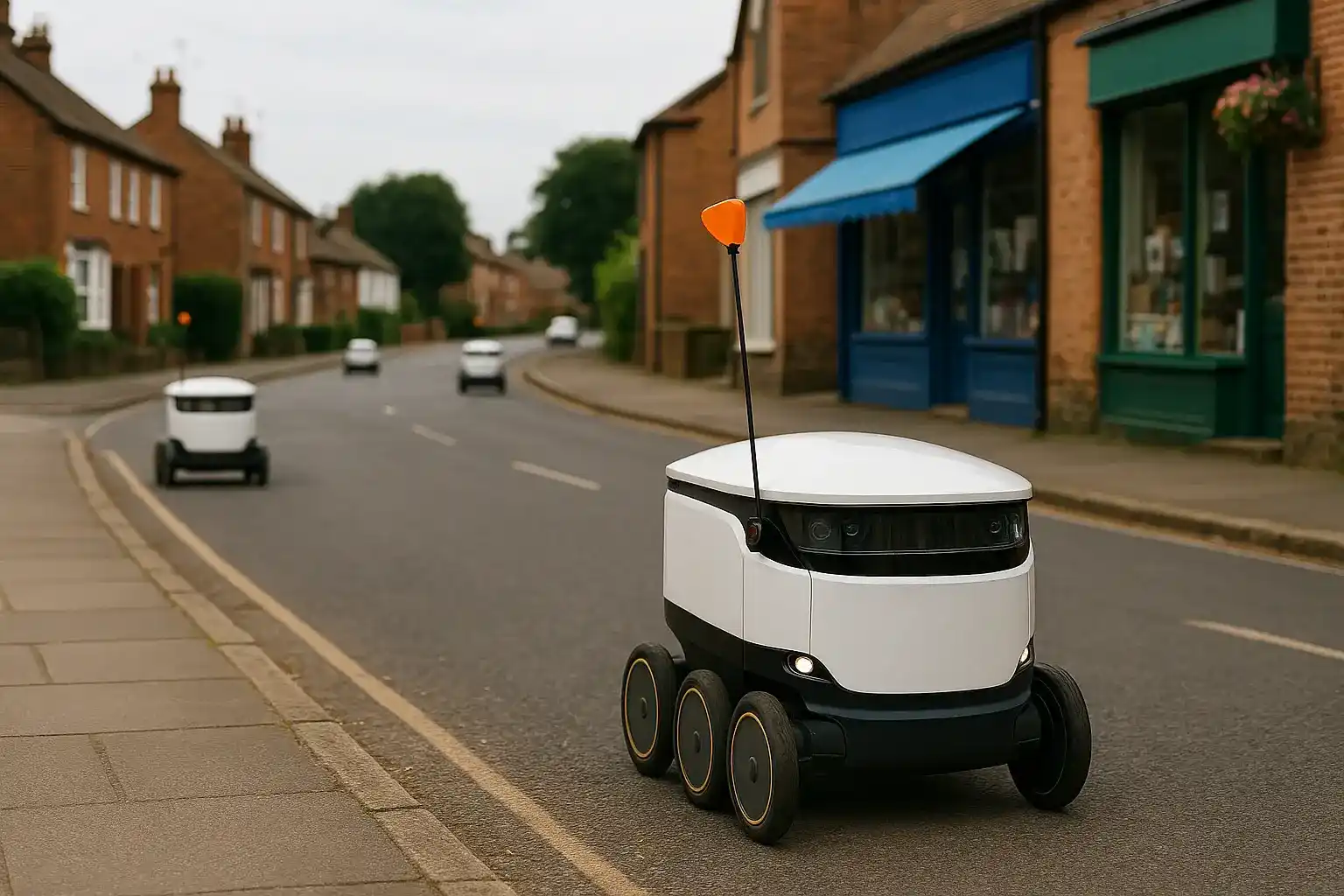The rise of delivery robots in the UK marks a new era for everyday logistics. What began as experimental trials in big cities is now spreading rapidly to smaller British towns. These compact, self-driving couriers are redefining convenience, sustainability, and even social habits. As residents grow accustomed to seeing robots quietly rolling down village streets, the technology is becoming a natural part of daily life.
Also read: Mean Squirrel Chaos: How a California City Battles Unexpected Wildlife Attacks
The Expansion of Delivery Robots in the UK
Over the past few months, several small UK towns have embraced the use of delivery robots in the UK developed by companies like Starship Technologies. These autonomous machines navigate sidewalks using advanced sensors, cameras, and GPS systems to deliver groceries, parcels, and takeaways directly to customers’ doors.
What’s remarkable is not only their efficiency but also their acceptance among residents. Many towns that once viewed automation as a futuristic concept are now celebrating its practical benefits — fewer short car trips, lower emissions, and faster delivery times.
The deployment began in suburban areas, but by 2025, hundreds of small British communities — including Milton Keynes, Cambourne, and even parts of Northern England — are testing or fully adopting robotic delivery services.
How Autonomous Delivery Robots Work
The Role of Autonomous Delivery Robots
The backbone of this transformation is the autonomous technology driving these machines. Each robot operates using a combination of machine learning, 3D mapping, and obstacle detection systems. They recognize pedestrians, pets, and road crossings, adjusting their path in real time.
Inside, the robots maintain temperature-controlled compartments to keep food fresh. When they reach a destination, customers unlock them using a smartphone app and receive their items safely. The robots can even “speak,” greeting users with friendly messages to humanize the experience.
According to reports, each robot can make up to 15 deliveries a day on a single battery charge, highlighting the potential of clean, efficient automation[1].
Challenges and Social Reactions
Despite their growing popularity, delivery robots in the UK face several challenges. Some residents worry about privacy, since onboard cameras record their surroundings. Others question the impact on human delivery jobs or express concerns about robots blocking narrow pavements.
However, surveys show that public opinion is largely positive. In smaller towns, many see the robots as an innovative and eco-friendly solution, especially for elderly or mobility-impaired residents. Children, meanwhile, often view them as friendly community helpers — giving these machines a social role beyond their function.
The Future of Robot Delivery Services
The Rise of Robot Delivery Services
The UK government and local councils are beginning to take notice of how these technologies can support sustainability goals. Robot delivery services reduce local traffic congestion and CO₂ emissions, aligning with national climate policies.
Industry experts predict that within five years, thousands of delivery robots in the UK could operate daily, supported by 5G networks and improved AI coordination. As the technology matures, we may soon see larger autonomous vehicles or drone-assisted systems joining the mix.
In short, Britain’s quiet streets are becoming testbeds for the next chapter of the smart city revolution.
Conclusion
The story of delivery robots in the UK reflects a fascinating blend of innovation, community adaptation, and environmental awareness. While challenges remain, the balance between technology and human life seems to be evolving harmoniously. As these machines continue to roll through small towns and suburbs, they represent not just convenience — but the beginning of a more connected, sustainable, and automated future.
Also read: Hidden Dangers of Ocean Warming in 2025: Record Levels Threaten Marine Life and Humanity




